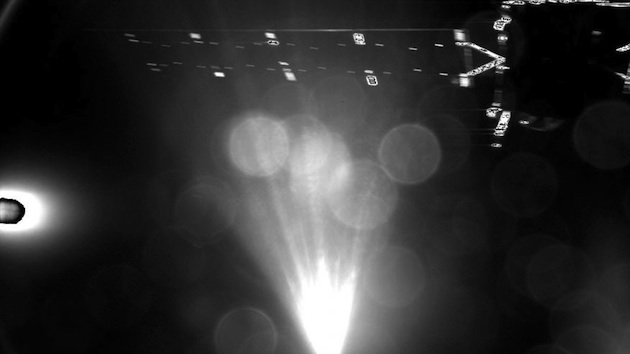

European Space Agency’s Philae lander (ESA/Rosetta/Philae/CIVA)
The European Space Agency’s Philae lander space probe has made space history by successfully reaching the surface of comet 67P/Churyumov-Gerasimenko. The risky first-ever landing of its kind, which happened at 11.03 AM ET, was met with an eruption of applause at the ESA’s control room in Darmstadt, Germany.
Philae, as previously stated, is the first probe ever to land on a comet. The ESA released the first image Wednesday — viewable above — of its Philae lander actually separating from the Rosetta mothership toward the surface of comet 67P/Churyumov-Gerasimenko.
The separation, which took place around 4 AM ET, was only the beginning of what was a 7-hour trip to the comet’s surface. It is a mission that started roughly a decade ago by the Rosetta spacecraft and its Philae lander, which have been navigating through the solar system toward the comet.
Comet 67P/Churyumov-Gerasimenko is approximately 2.5 miles wide and travels at speeds up to 84,000 miles per hour, making the landing a difficult challenge that now serves as a testament to the power of human ingenuity.
The lander, which is reportedly no larger than an average sized washing machine, descended to the comet relying upon built-in harpoons and screws to secure itself to the comet. The descent was an anxious and helpless moment for the scientists, who could do nothing but watch and trust their technology and efforts. They watched on as the probe, which was 311 million miles from Earth, relayed delayed data through the video feed.
The Rosetta and Philae will stay on the Comet 67P/Churyumov-Gerasimenko as it speeds toward the sun. The closer the distance becomes to the sun the more active the comet will become, as it heats up and begins to throw off ice particles. With 21 different scientific instruments, the machines will collect data that scientists hope will help explain the origins of comets and other celestial bodies.
The $1.6 billion mission launched in 2004.







